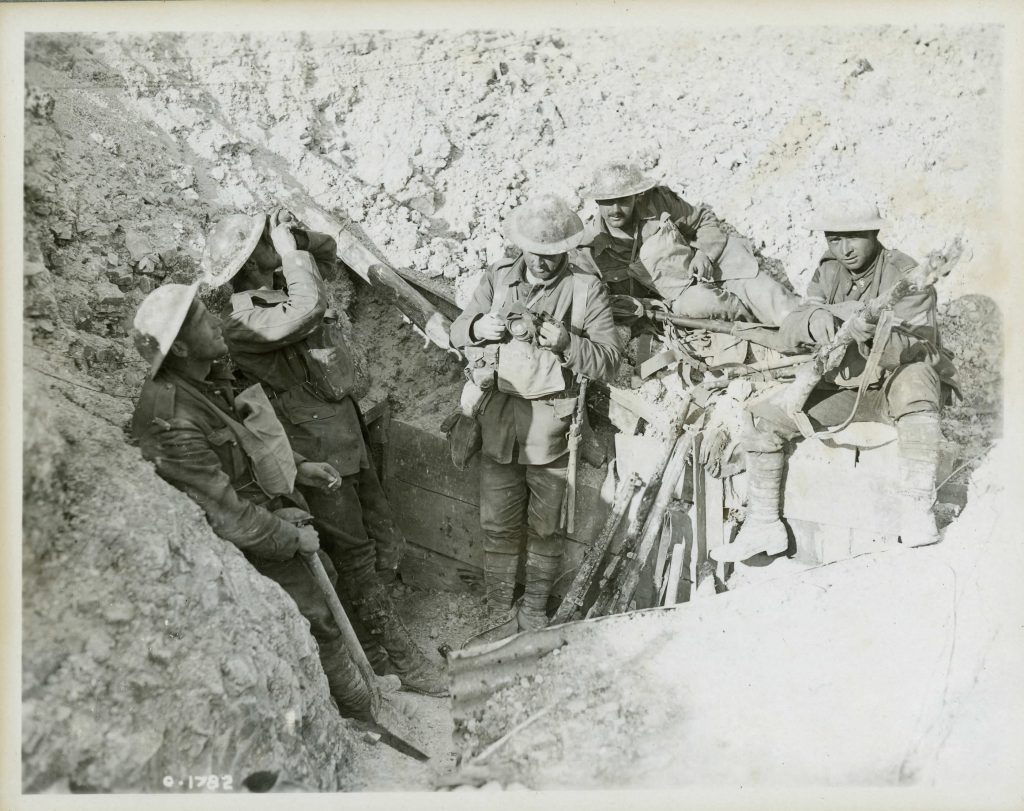As Australians and New Zealanders mark the solemn ANZAC Day1 tradition on 25 April, Christian Nielsen explores the trenches of WWI through the prism of war poetry, past and present.
“The war in Ukraine has become one of miserable attrition. Reports of Russian conscripts in Bakhmut sent to be machine-gunned by the Ukrainian forces are horrifying – the sort of killing you’d associate with the first world war in Europe, not this century.”
Call it a sign, but these lines by The Economist magazine’s digital editor, Adam Roberts, dropped into my feed the very moment I was mulling how to capture the impressions of an Easter getaway to the Somme Battlefields of northern France.
The gurgling truth about trench warfare is perfectly captured in Wilfred Owen’s war poem Dulce et decorum est (Latin: ‘It is sweet and fitting) – a scathing yet poetic commentary that takes aim at the war-mongers and propogandists of the time.
From first-hand experience of the horrors of entrenched war, Owen punches a literary bayonet through the myths and platitudes dating back to the Roman-era (Horace’s odes to patriotism and valour) and repeated throughout history.
He exposes the seeping wounds of such romantic notions as Dulce et decorum est pro patria mori (How sweet and honourable it is to die for one’s country), starting with the sardonic twist of the poem’s title.
Owen’s votive offering conjures up imagery of wars eternal. This was brought to home during my recent tour of WWI trenches and a visit to The Museum of Lens’ 14-18 – an interpretation centre capturing the battles and events of the Somme covering a nearly 90km front spanning the Nord-Pas-de-Calais region.

The visitor centre is tucked into the foothills of the Notre-Dame-de-Lorette ridge, which is home to a piercing basilica and France’s largest military cemetery in the village of Ablain-Saint-Nazaire, northwest of Arras.
The museum’s architect-designed blocks or ‘chapels’ present a telling story of everyday life for soldiers of all nationalities during the so-called Great War. Owen’s poem features in an exhibit on the power of the word in times of war.
Dulce et decorum est
Bent double, like old beggars under sacks,
Knock-kneed, coughing like hags, we cursed through sludge,
Till on the haunting flares we turned our backs,
And towards our distant rest began to trudge.
Men marched asleep. Many had lost their boots,
But limped on, blood-shod. All went lame; all blind;
Drunk with fatigue; deaf even to the hoots
Of gas-shells dropping softly behind.
Gas! GAS! Quick, boys! An ecstasy of fumbling
Fitting the clumsy helmets just in time,
But someone still was yelling out and stumbling
And flound’ring like a man in fire or lime.
Dim through the misty panes and thick green light,
As under a green sea, I saw him drowning.
In all my dreams before my helpless sight,
He plunges at me, guttering, choking, drowning.
If in some smothering dreams, you too could pace
Behind the wagon that we flung him in,
And watch the white eyes writhing in his face,
His hanging face, like a devil’s sick of sin;
If you could hear, at every jolt, the blood
Come gargling from the froth-corrupted lungs,
Obscene as cancer, bitter as the cud
Of vile, incurable sores on innocent tongues –
My friend, you would not tell with such high zest
To children ardent for some desperate glory,
The old Lie: Dulce et decorum est
Pro patria mori.
(Wilfred Owen, published posthumously in 1920 – read also his ‘Anthem for doomed youth’)

Several months after completing the poem, Wilfred Owen was to become one of the nearly 580,000 soldiers representing 40 nationalities who died along the front line spanning French Flanders and Artois. In the dying days of the war, on 4 November 1918, the poet was killed at the Sambre-Oise Canal near Ors, east of Cambrai. He was 25 years’ old.
Russia’s invasion of Ukraine has been the regrettable catalyst for a fresh wave of war poetry, which according to the Guardian newspaper helps to “make sense of the senseless”, and also acts a written account of what is being witnessed on the ground.
A Ukrainian government-backed website, called War Poetry, encourages members of the public to publish their poems as an outlet but also a source of inspiration to the soldiers.
Mightier than the sword
“Our poetry is a weapon that inspires those who hold the real weapon,” the site’s developers challenge. Ukrainians have responded in force. More than 28,500 poems and stories have been uploaded since the beginning of the war in February 2022.
“Every poem, every line, every word is part of Ukrainian history,” the site continues, and future generations “should remember what we went through and be inspired by courage and heroic struggle”.
For soldiers past and present, war poetry will always be the ultimate emotional outpouring, helping them process unspeakable visions and acts. Wistfully, it is a form that lives as long as the fighting itself refuses to die.
(1) ANZAC Day is an annual commemoration of soldiers in the Australian and New Zealand Army Corps who landed on the shores of Gallipoli, Turkey on 25 April 1915. Today, it marks the service and sacrifice of all Australians and New Zealanders who died in all wars, conflicts, and peacekeeping operations.













